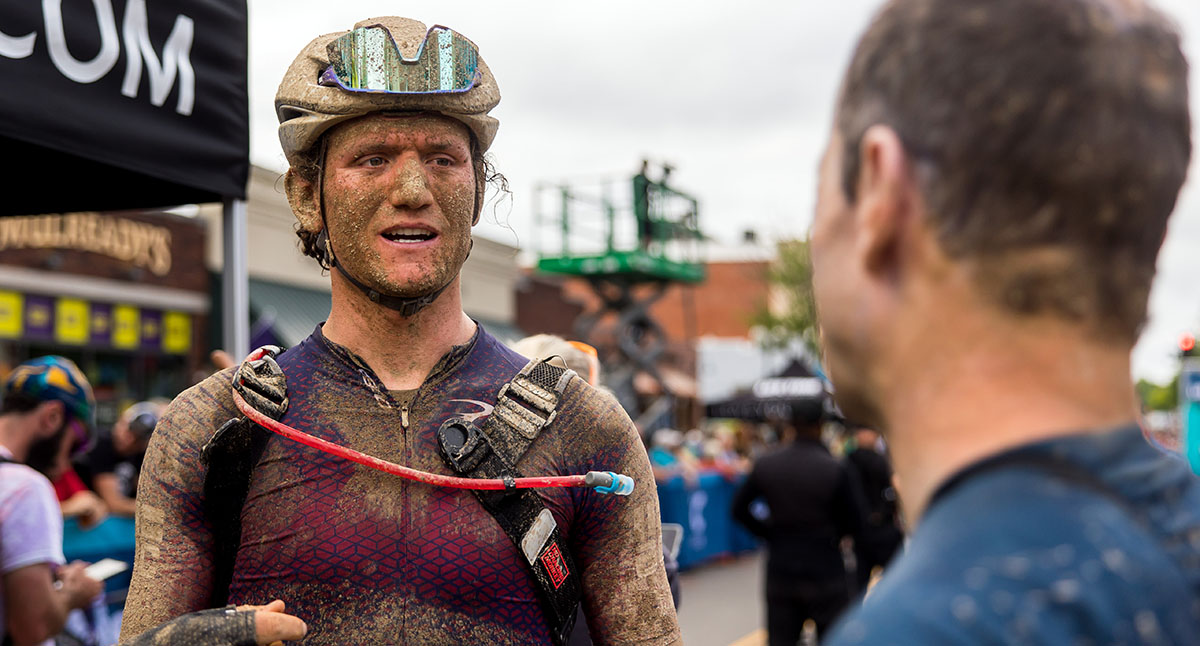Brennan Wertz about Racing, Bikepacking and Why Gravel is Special
I got to know Brennan Wertz when he worked at Above Category, one of our favorite shops in the Bay Area. A year ago, he decided to pursue his dream of becoming a gravel racer. We met in person at Unbound when we finished just minutes apart—he raced the 200-mile ‘big’ race while I did the 350-mile XL. (He started much later, of course—it’s not like I rode 350 miles in the time he rode 200!) A few months later, at the end of the season, we sat down for a chat. We talked about racing as a rider who doesn’t fit the ‘skinny cyclist’ mold, about his equipment choices, and why gravel is special.
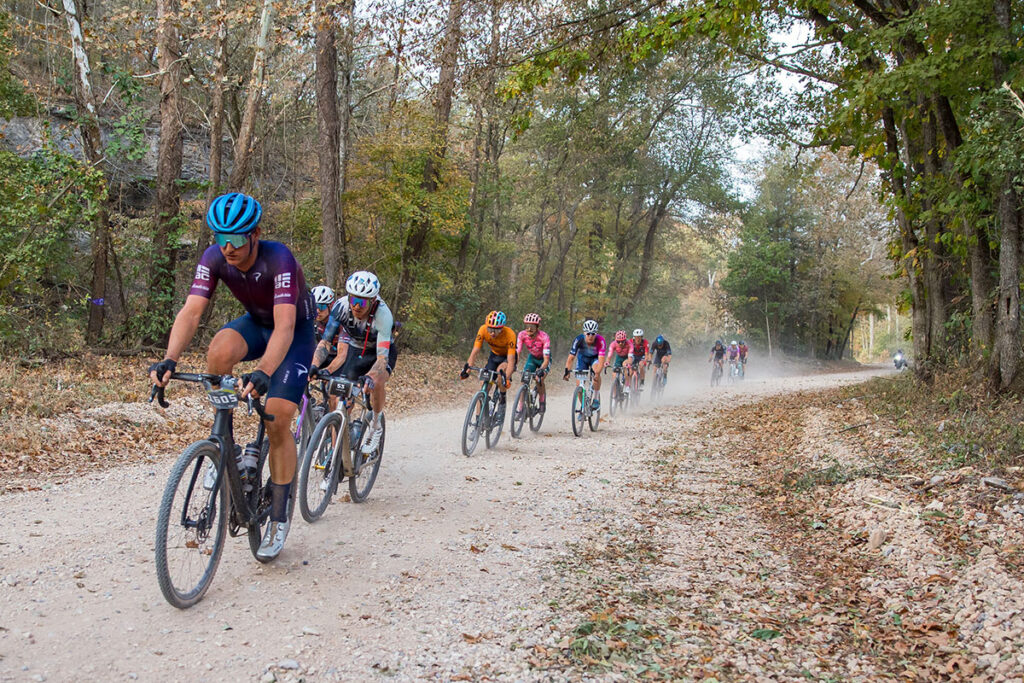
JH: Congratulations on your excellent season. Winning two races of the Grasshopper Series must have been a great satisfaction. And then you were on the podium in the Belgian Waffle Ride series—a hotly contested race series if there ever was one. Tell us a bit about your season.
BW: Thank you! I had a great year and really enjoyed stepping further outside of my comfort zone in the off-road racing scene. I feel I learned a lot and enjoyed the learning process throughout the year. I still feel quite new to this scene, therefore I was extremely pleased and honored when I landed on podiums in 2022. For me, racing is not just about finishing high in the results. One of the greatest privileges of being a professional cyclist is experiencing all the beautiful places my bicycle takes me. Sure, I may not always have the time or energy to fully appreciate the scenery when I’m in the thick of a race, but even during races there are countless opportunities to enjoy the landscape, the smells, and the texture of the dirt. Since I’ve been racing full-time, I have traveled far and wide, always bringing my bike. Everywhere I go, the terrain is different, which makes the experience so special for me. From the rolling hills of the Midwest, to the dry forests of Arkansas, to the epic climbs of the Dolomites, to my home training roads along the California coastline, there is always something new to explore and cherish.
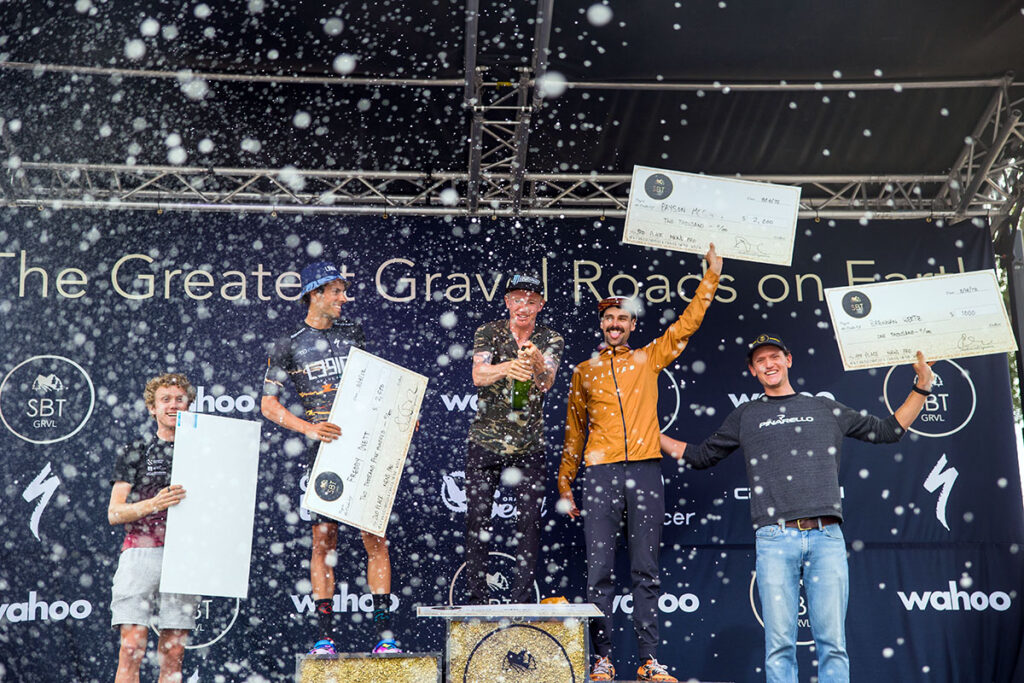
JH: Which race is the most memorable of 2022?
BW: I think SBT GRVL is one of the most memorable races of 2022. The field featured an extremely high caliber of competitors, and there was no shortage of mid-race drama with the feed zone controversy. I didn’t have a hydration pack, so I ended up stopping at numerous feed zones, and then chasing back onto the group. It was a very hard-fought battle, and I was thrilled to end up on the podium at the end of the day. [Brennan came 4th in the star-studded race over the ‘Full Course.’]
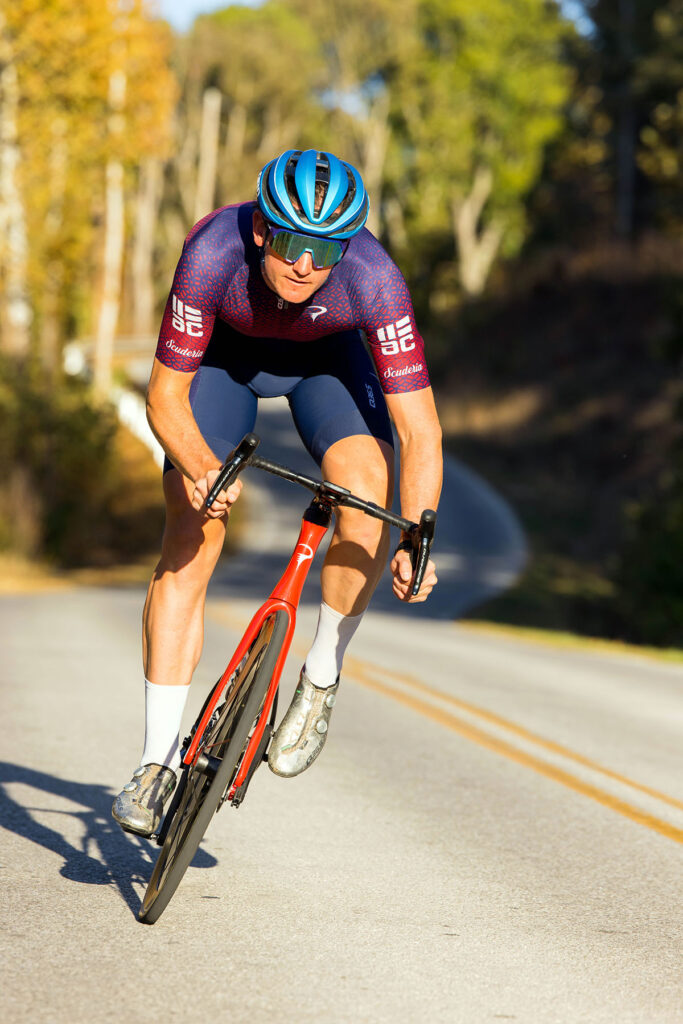
JH: And which result are you most proud of?
BW: It may not have been the biggest or most prestigious event I did last year, but my win at the King Ridge Hopper is a result I am very proud of. This event was a timed segment up the iconic King Ridge Road in Sonoma County. I had never ridden this road before that weekend, so I was nervous and excited to give it a go. I also knew I would be up against Pete Stetina, the local legend who had a long and successful career in the World Tour as a climber. While doing a little research on the climb itself, I stumbled upon a video from the Tour of California where Pete was attacking up that climb while wearing the climber’s jersey. Pretty cool!
Needless to say, I felt this was Pete’s race to lose. He’s the local hero in Sonoma and an absolute world-class climber. I love a good climb and really enjoy pushing myself, but I also know the reality of my situation as a larger rider, often hovering around the 200-pound [90 kg] mark. So I showed up as a serious underdog, but I gave it everything. I went out hard on the lower 8-12% slopes and then kept up the pressure as the road undulated along the ridgeline. It was an all-out solo effort. I had no idea what the results were until I heard my name being called up to the podium as they announced the winner. I was so stoked to win that hillclimb, especially since it was such a hard-fought battle. In the end I nabbed the win by just three seconds from Pete—over a 36-minute effort!
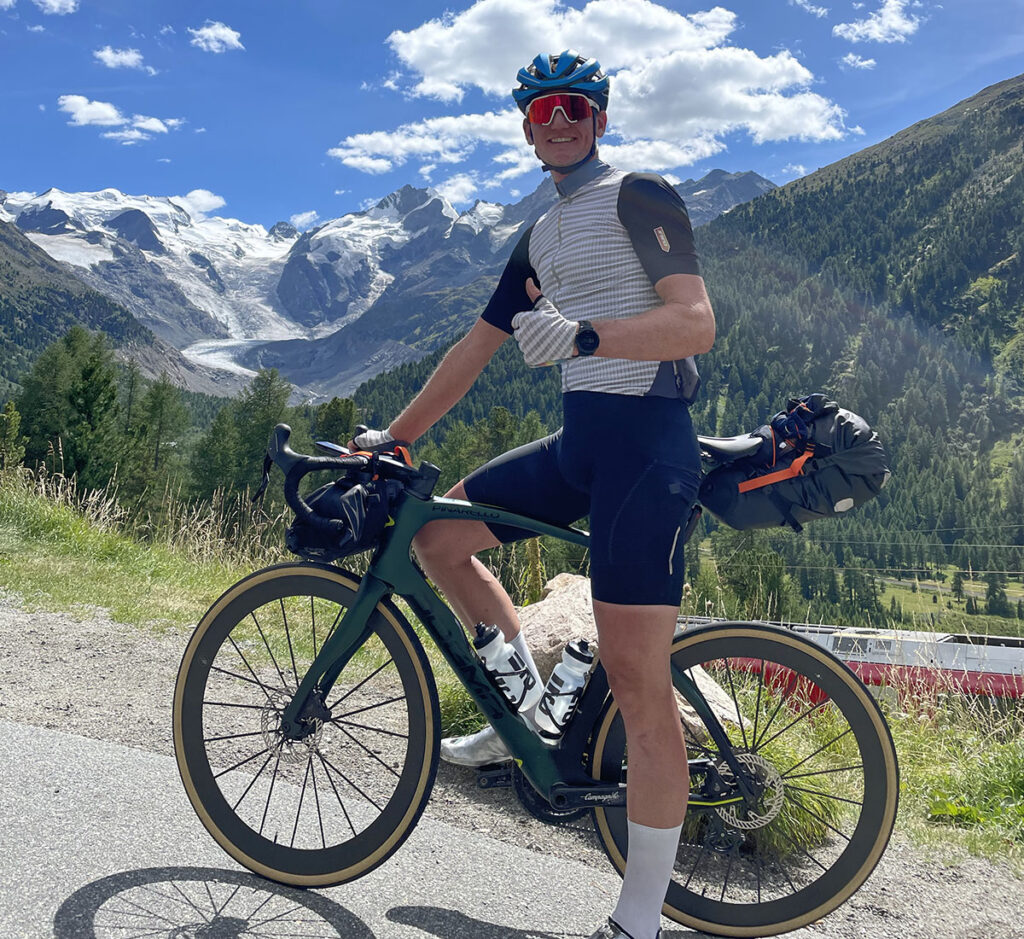
JH: Amazing! You didn’t focus solely on racing. You’ve enjoyed some epic bikepacking adventures, too…
BW: I love the freedom of bikepacking. It allows me to move freely through such remote places, drawing me ever-closer to nature and my environment. I constantly make an effort to appreciate my surroundings in training, but when I’m bikepacking, I feel an even stronger sense of this connection. There is something special about riding all day, with no specific destination or timeline and the freedom that comes with this type of riding. As cliché as it might sound to talk about ‘stopping to smell the roses,’ this is something I do a lot when on a multi-day bikepacking trip.
Partway through the summer I had the wonderful opportunity to travel to Italy to visit the Pinarello HQ and spend a few weeks training in the Dolomites. The first week of the trip was focused around a video project we were working on, with the following weeks more of a relaxed training camp. I thoroughly enjoyed the region where I was staying in the Dolomites. The riding was incredible, the scenery unlike anything I had ever seen before, and the food exquisite.
I truly enjoyed getting into the daily training routine of climbing the high alpine passes and building up a solid base of fitness that would carry me through the remaining months of the season. This camp in the Dolomites was perfect preparation for SBT GRVL and the other races that would follow.
Another highlight came at the end of my trip. With one week left in Europe, I had a perfect opportunity to do something I had dreamed of: ride across the Alps on a bike. I had attempted a similar crossing many years prior, but it was too late in the season, and I ended up encountering much snow, ice, and rain on the high mountain passes. Fortunately, this time around it was late July, and the weather was ideal.
I set off from the valley of Alta Badia, where I had been staying. Over the course of three days rode many high alpine passes through Italy, Switzerland, Liechtenstein, and Austria to Friedrichshafen in Germany, where the headquarters of the Lightweight wheel company are located. There I got to tour their facility, see a portion of the wheel production (some of this was quite secretive), and go for a ride with some of the employees. After visiting Lightweight and a quick stop to visit some of my German relatives, I set off on a slightly more direct route back to the Dolomites via the Brenner Pass from Austria into Italy. This trip was a total of 6 days, 43 hours ride time, 1133 km, and 17,280 m climbing. It was a big week of riding, an unforgettable experience, and the perfect way to end my time training in Europe.
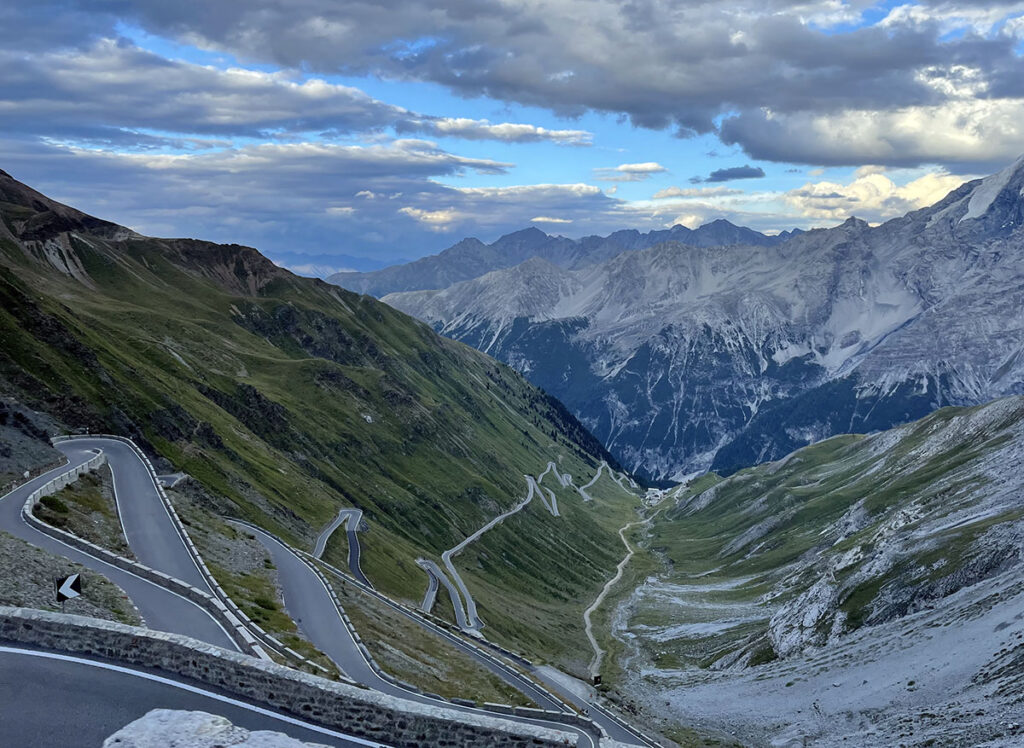
JH: I’m envious of that trip. Tell us about one highlight!
BW: My favorite pass of the entire ride was the Stelvio Pass. I ended the first day of my trip with the roughly two-hour climb to the top of the pass, where I spent the night. I began climbing at around 6:30 p.m., finishing around 8:30 p.m. Due to how late in the evening I was climbing the pass, there was almost no traffic at all, which made the climb that much more enjoyable.
As I climbed from the valley floor, all I could hear was my own breathing and the chirping sounds of the Marmots alongside the road. It was totally surreal and so peaceful. With each of the forty-eight switchbacks, I made my way higher above the valley floor, and the views got more and more amazing. At the summit, surrounded by glacier-capped peaks, I watched the sky turn the most magnificent shade of magenta as the sun set. I certainly won’t be forgetting that moment anytime soon.
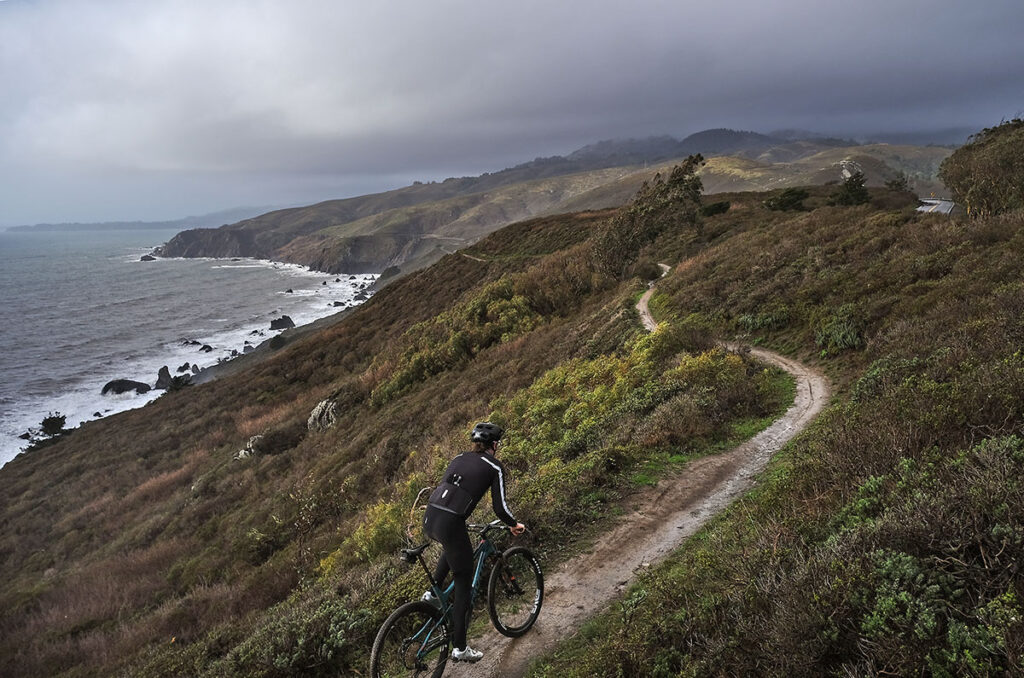
JH: Wow! I’ve long dreamed of climbing the Stelvio. Now it’s even more firmly on my list… Your background is in rowing, where you made it all the way to the National team and won a gold medal at the U23 World Rowing Championships. What attracted you to cycling, and more specifically to gravel?
BW: I grew up in Marin County, California, which is known as the birthplace of mountain biking. My parents met while my dad was on a three-month bike-touring trip on the East Coast. Cycling was always a part of my childhood, albeit never competitively. While I was still rowing, I would mix in some cycling as cross-training and even took one summer off from rowing to live in Germany and do an internship. During that summer, I purchased a hardtail mountain bike and really enjoyed the off-road riding and bikepacking trips I went on. That experience sparked a much greater interest in cycling for me and showed me what was possible on two wheels. I knew I still wanted to row for a few more years, but that summer, I realized that I wanted to do more cycling whenever I was done with rowing.
I ended up having some bad injuries in 2018, when I was rowing with the National Team. While we ultimately won the World Championships, I was in a lot of pain and suffered a lot that summer. I needed to take some time off after the Worlds to let my body heal. During that time, I spent many hours exploring on my bike and quickly fell back in love. It was then that I decided to pivot and focus 100% on cycling, still not knowing where it would take me.
Gravel cycling specifically is something that I love because it is so diverse and multi-dimensional. The discipline requires lots of power and endurance, but also a great deal of bike-handling skills and mechanical competence. I find gravel cycling to be more fun and laid-back than other disciplines I have tried, while still offering a high degree of professionalism. For me that is the perfect balance.
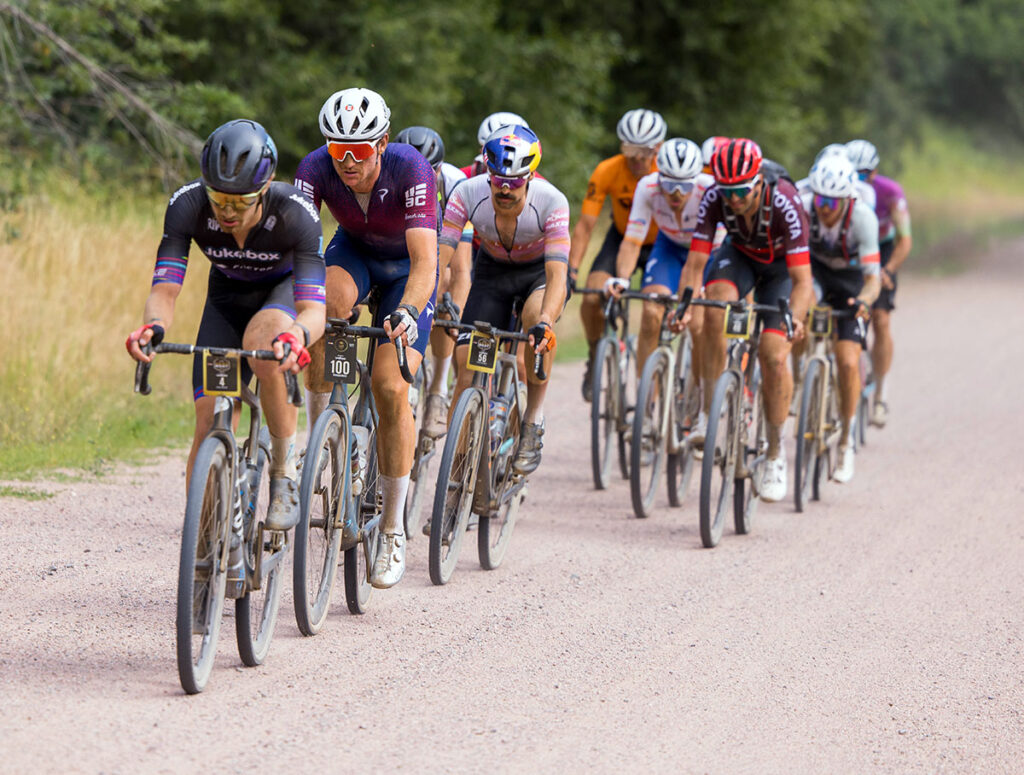
JH: […] When we think of bike racers, we tend to think of lightweight and slim athletes. You’re tall and muscular. How does that affect your racing and strategy?
BW: It’s no secret that I’m a bigger person and not built like your typical pro cyclist. I think this is a disadvantage at times, but I view it as an asset as well. While I am taller and heavier than the average cyclist, I also have a lot of power from my years of rowing. I have built and tuned my ‘engine’ over more than ten years of hard training. While I may be new to professional cycling, I am not new to pushing myself and my physical and mental limits. I love nothing more than seeing these little, skinny guys look at me in disbelief as I hang with them while hammering up climbs. My hope is that my riding and racing can inspire others who also don’t fit the ‘typical cyclist’ mold to get into cycling and push themselves. It doesn’t matter who you are or what you look like, the only thing that matters is having fun on two wheels!
JH: Bike, components and especially tires probably make a bigger difference in gravel than in any other category of bike racing. Before you started racing full-time, you worked at Above Category, the pro shop in Sausalito, CA. They’ve continued to support you. How has working there shaped your choices of equipment?
BW: I’ve been very fortunate to have worked at Above Category and continue to have their support now that I am racing full time. They have a unique approach to cycling and an attention to detail I haven’t encountered anywhere else. They have access to a lot of really high-performance equipment. Through them, I’ve been blessed with the opportunity to test a lot of this equipment. I love working with the team to design and spec my bikes for a rigorous year of racing on diverse terrain. From gearing to tires, to frame geometry and everything in between, I can always count on the folks at AC to provide valuable insights when it comes to setting up my bike for a specific event. When working with AC, I know no stone will be left unturned and nothing will be left chance.
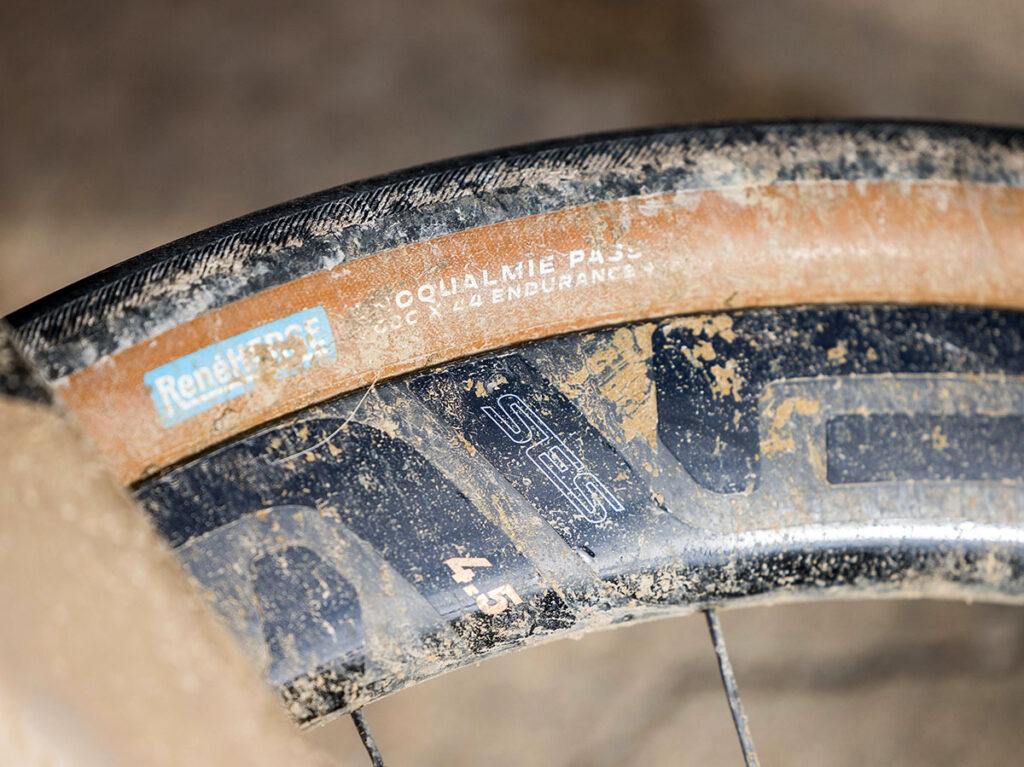
JH: You’ve been running Rene Herse tires all season. Which tires did you use and why?
BW: I love playing around with different tire setups on my bikes. I think the tires I have put the most miles on last year probably were the 32 mm Stampede Pass with the Extralight casing. I absolutely love the way they roll, corner, and accelerate. I also find them extremely durable and resilient, despite their low weight, minimal rolling resistance, and wonderfully supple ride quality.
When riding or racing on gravel, I personally love using the slicks. While there is no better feeling than a Hurricane Ridge hooking into some moist hero dirt, there is something special about the way a supple, high volume, slick tire handles on dirt surfaces. The traction always impresses me, even on the loosest of surfaces. If I had to only ride one tire for the rest of my life, it would undoubtably be the 44 mm Snoqualmie Pass with the Endurance casing. With that tire, I can go just about anywhere.
When it comes to choosing tires for pure racing, I will opt for the knobbies if I know the course is going to be particularly muddy or technical. If it’s a fast rolling course like SBT GRVL, BWR San Diego, or The Mid South, then I will opt for a slick tire. The reasons for choosing a knobby over a slick are usually better traction and increased puncture protection. Due to the speeds we often race at, the fact that visibility is quite limited when riding in a large group, and the increasingly technical nature of the courses, I often race on either Endurance or Endurance Plus casings. When training or doing a longer adventure ride, then I usually ride Endurance or Extralight.
JH: What tire pressures are you running?
BW: I play around with pressures a lot, but also try not to overthink it. I would say I’m often hovering around the high twenties to low thirties (PSI). For reference and as I mentioned earlier, I am 6’5″ (196 cm) tall and weigh roughly 200 pounds (90 kg). On certain tire/rim combinations like the Endurance Plus 42 mm Hurricane Ridge tires on my Enve G23s with CushCore inserts, I am closer to 20 PSI. That has taken some getting used to, but I spent a lot of time last summer riding challenging mountain bike trails on my gravel bike, and I found this setup to be ideal for that terrain (since I didn’t have a mountain bike with me).
Two years ago, I had a bikepacking/adventure gravel bike with bigger tire clearance. On that bike I could run the 55 mm Fleecer Ridge knobby tires at under 20 PSI, which was absolutely sublime for the rough fire roads and trails of Marin County. I didn’t quite have a bike like that for the 2022 season, but it looks like I will be able to have a similar bike for this season, which is something I am very excited about. More rubber = more fun!
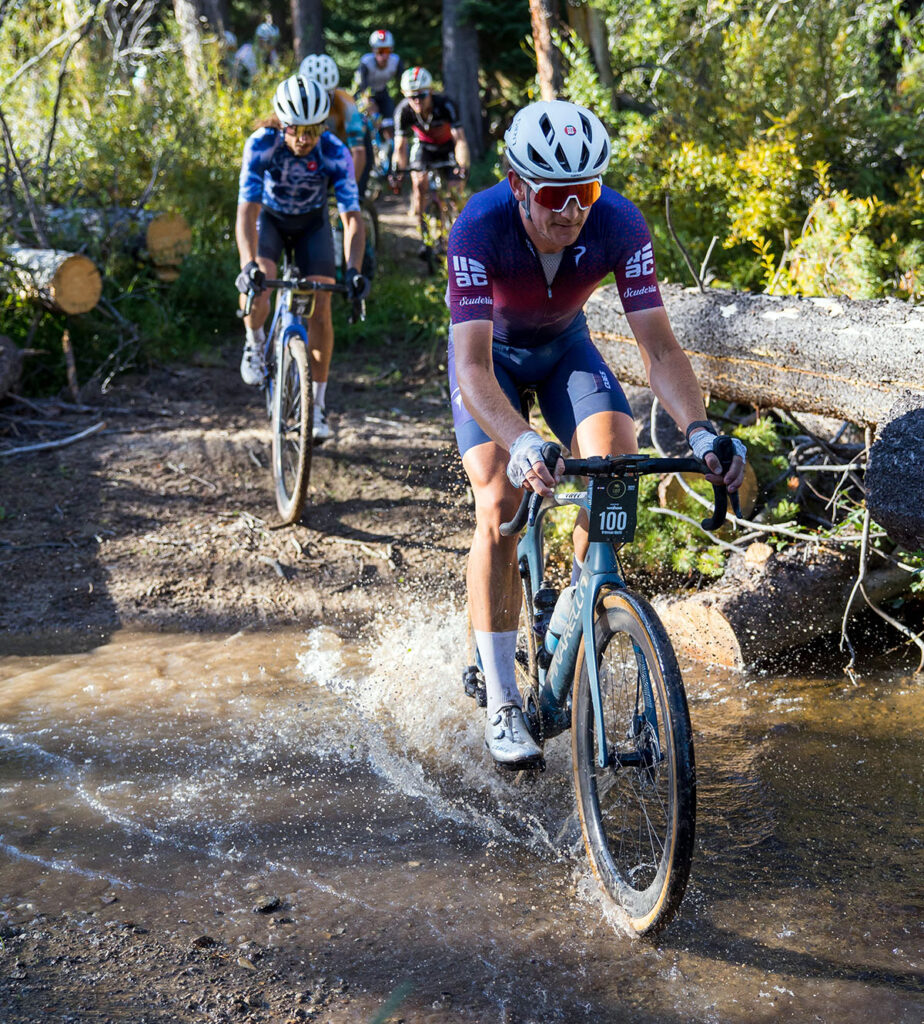
JH: What about the rest of your bikes? One-by or double? Electronic or cable-operated shifting? Aero wheels or lightweight rims? Any other component you absolutely love and want to share with our readers?
BW: I love tinkering with my bikes and dialing in my setup for the demands of each course. I’m very fortunate this year to ride some wonderful bikes from my friends at Mosaic Cycles. I don’t have a sponsor for my groupset components, which gives me the freedom to mix and match a bit. All of my mountain bikes will be one-by, built up with Sram Eagle AXS wireless groupsets. On the road, I will be riding exclusively two-by, but with a mix of mechanical and electronic. It hasn’t been finalized yet, but I am hoping to build up a rim-brake road bike featuring mechanical Campagnolo Super Record components. There is something very special about the tactile feel of Campagnolo’s mechanical shifting. For gravel, I will have two very different builds. One of my GT-1 gravel bikes will be built with a wireless Sram AXS Mullet setup, while the other is equipped with a Shimano Di2 two-by setup. I prefer the double for most fast gravel racing due to the tighter jumps between gears and ability to ‘dump’ gears quickly by shifting the front derailleur. That being said, there are courses where a 1x drivetrain is preferable.
In terms of wheels, I ride the very light and especially stiff wheels from Lightweight on the road. For all things off-road, I ride Enve rims. I have a variety of different rims that I choose from, depending on the course profile, but more often than not I opt for the deeper and stiffer aero rims.
One other piece of equipment that I really value is actually one that is invisible while riding. That is the Orange Seal sealant in my tires. Gravel racing is extremely tough on tires, and sealant is one of the most important parts of the entire bike. In order to win the race, you first have to make it to the finish line. This is where the sealant in my tires places a very crucial role.
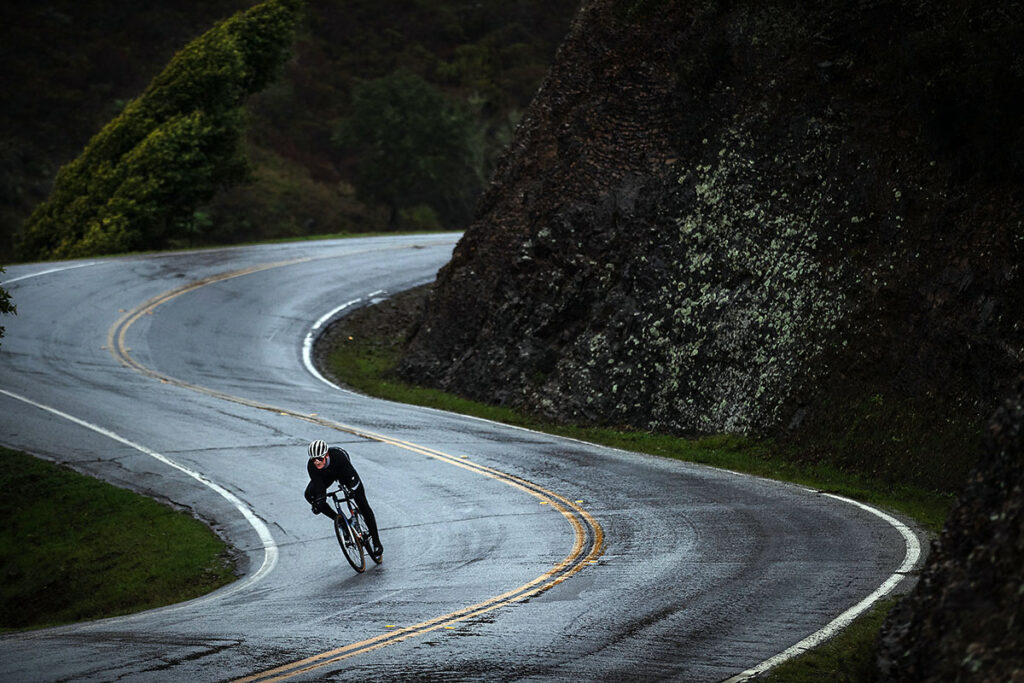
JH: I like the combination of racing and adventure in your season. Where do you see gravel moving in the future?
BW: I really like how open gravel racing is. There are certainly and undeniably still considerable barriers to entry, but they pale in comparison to those facing cyclists looking to race at the highest level on the road. With gravel racing and its unique ‘privateer’ sponsorship model and lack of a governing body, it is easier for riders to access the highest level of racing. I think the sport will continue to change rapidly in the coming years, hopefully mostly for the better.
I really hope the adventurous side of the sport is carried onward and highlighted by even the most serious of racers. It’s crucial for us racers to have an adventurous side to excel in the sport, and I hope that continues to be the case. I know for a fact I will always be keen on crazy, epic adventures on two wheels. In my opinion those experiences are just as important and valuable as attending and competing in the world’s highest-profile gravel races.
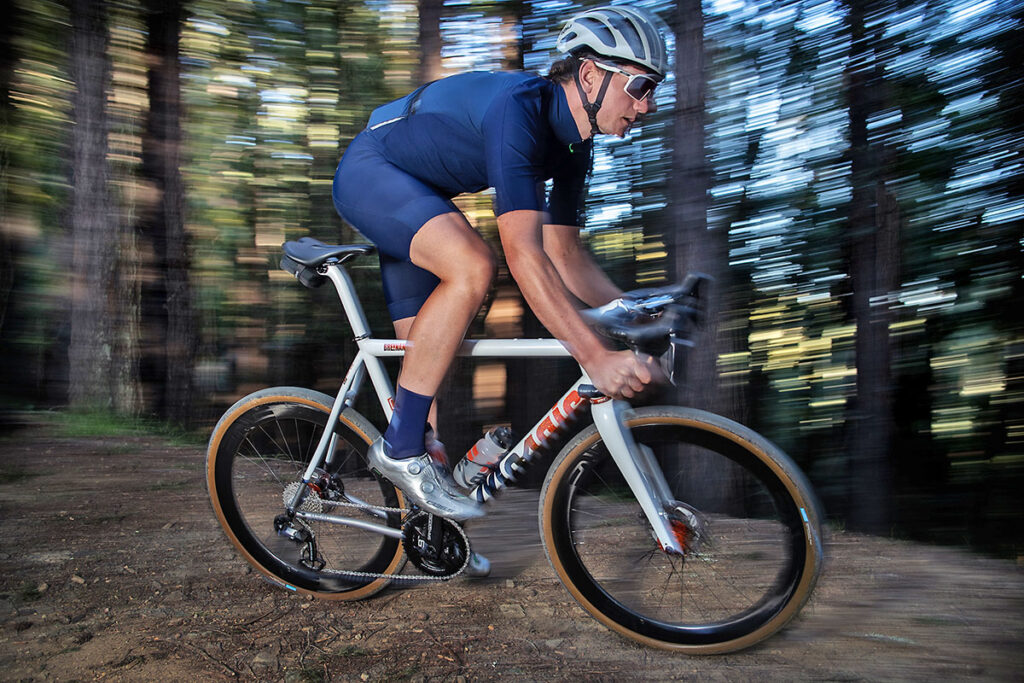
JH: What are your plans for the coming season?
BW: For the 2023 season, I will be returning to the beautiful, handmade Mosaic bikes from Boulder, Colorado. I became friends with the folks at Mosaic in 2021, and we had a great year together, building some incredibly beautiful, functional, and versatile bikes along the way. I couldn’t be more excited to be racing a full season of gravel and mountain bike races atop their custom titanium frames.
This year I applied for and was accepted into the 2023 Lifetime Grand Prix, a seven-event off-road racing series in the U.S. I am excited to be a part of this series, which is doing so much to elevate off-road racing in the U.S. In addition to the Lifetime Grand Prix, I will also be racing numerous other gravel events ranging from small local affairs to full-blown pro races with deep international fields like SBT GRVL, The Mid South, and FNLD GRVL. And equally important, I will be setting off on a couple multi-day bikepacking adventures to continue pushing myself, my personal boundaries, and my equipment. Here’s to another great year on two wheels!


